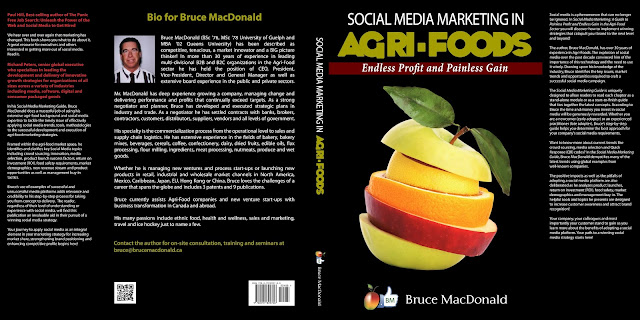20 QUESTIONS ON GENETICALLY MODIFIED (GM) FOODS PART 4
Published in WHO
Q12. Have GM products on the international market passed a risk assessment?
The GM products that are currently on the international market have all passed risk assessments conducted by national authorities. These different assessments in general follow the same basic principles, including an assessment of environmental and human health risk. These assessments are thorough, they have not indicated any risk to human health.
Q13. Why has there been concern about GM foods among some politicians, public interest groups and consumers, especially in Europe?
Since the first introduction on the market in the mid-1990s of a major GM food (herbicide-resistant soybeans), there has been increasing concern about such food among politicians, activists and consumers, especially in Europe. Several factors are involved.
In the late 1980s – early 1990s, the results of decades of molecular research reached the public domain. Until that time, consumers were generally not very aware of the potential of this research. In the case of food, consumers started to wonder about safety because they perceive that modern biotechnology is leading to the creation of new species.
Consumers frequently ask, “what is in it for me?”. Where medicines are concerned, many consumers more readily accept biotechnology as beneficial for their health (e.g. medicines with improved treatment potential). In the case of the first GM foods introduced onto the European market, the products were of no apparent direct benefit to consumers (not cheaper, no increased shelf-life, no better taste). The potential for GM seeds to result in bigger yields per cultivated area should lead to lower prices. However, public attention has focused on the risk side of the risk-benefit equation.
Consumer confidence in the safety of food supplies in Europe has decreased significantly as a result of a number of food scares that took place in the second half of the 1990s that are unrelated to GM foods. This has also had an impact on discussions about the acceptability of GM foods. Consumers have questioned the validity of risk assessments, both with regard to consumer health and environmental risks, focusing in particular on long-term effects. Other topics for debate by consumer organizations have included allergenicity and antimicrobial resistance. Consumer concerns have triggered a discussion on the desirability of labelling GM foods, allowing an informed choice. At the same time, it has proved difficult to detect traces of GMOs in foods: this means that very low concentrations often cannot be detected.
Q14. How has this concern affected the marketing of GM foods in the European Union?
The public concerns about GM food and GMOs in general have had a significant impact on the marketing of GM products in the European Union (EU). In fact, they have resulted in the so-called moratorium on approval of GM products to be placed on the market. Marketing of GM food and GMOs in general are the subject of extensive legislation. Community legislation has been in place since the early 1990s. The procedure for approval of the release of GMOs into the environment is rather complex and basically requires agreement between the Member States and the European Commission. Between 1991 and 1998, the marketing of 18 GMOs was authorized in the EU by a Commission decision.
As of October 1998, no further authorizations have been granted and there are currently 12 applications pending. Some Member States have invoked a safeguard clause to temporarily ban the placing on the market in their country of GM maize and oilseed rape products. There are currently nine ongoing cases. Eight of these have been examined by the Scientific Committee on Plants, which in all cases deemed that the information submitted by Member States did not justify their bans.
During the 1990s, the regulatory framework was further extended and refined in response to the legitimate concerns of citizens, consumer organizations and economic operators (described under Question 13). A revised directive will come into force in October 2002. It will update and strengthen the existing rules concerning the process of risk assessment, risk management and decision-making with regard to the release of GMOs into the environment. The new directive also foresees mandatory monitoring of long-term effects associated with the interaction between GMOs and the environment.
Labelling in the EU is mandatory for products derived from modern biotechnology or products containing GM organisms. Legislation also addresses the problem of accidental contamination of conventional food by GM material. It introduces a 1% minimum threshold for DNA or protein resulting from genetic modification, below which labelling is not required.
In 2001, the European Commission adopted two new legislative proposals on GMOs concerning traceability, reinforcing current labelling rules and streamlining the authorization procedure for GMOs in food and feed and for their deliberate release into the environment.
The European Commission is of the opinion that these new proposals, building on existing legislation, aim to address the concerns of Member States and to build consumer confidence in the authorization of GM products. The Commission expects that adoption of these proposals will pave the way for resuming the authorization of new GM products in the EU.
Check out my new e-book entitled: "Social Media Marketing in Agri-Foods: Endless Profit and Painless Gain"
The book is available on Amazon and Kindle for $4.99 USD. Visit amazon/Kindle to order now:
http://www.amazon.ca/Social-Media-Marketing-Agri-Foods-ebook/dp/B00C42OB3E/ref=sr_1_1?s=digital-text&ie=UTF8&qid=1364756966&sr=1-1
Thanks for taking the time


No comments:
Post a Comment